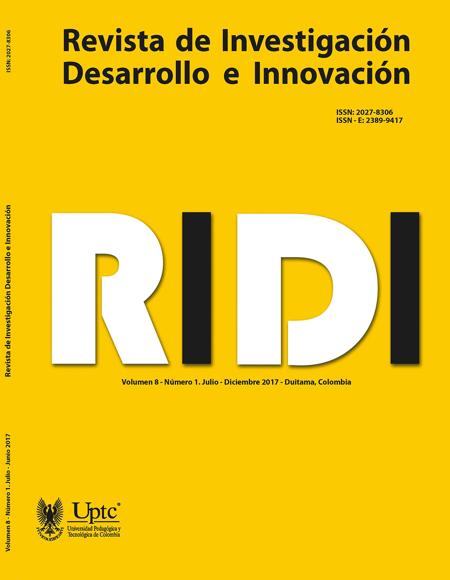Automatic measurement of anthropometric variables for the evaluation of respiration using artificial visión

Abstract
The speech-language evaluation of breathing is a tool important for the health professional because it allows to know the difficulties of people when breathing. This protocol is used manually with the help of a few markers, and not allows characterization of body posture, measuring to distances, angles and positions. This article presents a novel alternative in the development of a system for automatic measurements of anthropometric variables, which intervene in the phonoaudiological assessment of respiration, using artificial vision. Variables were taken on the 4 planes: frontal, posterior, left sagittal and right sagittal; Also, 32 markers were included to obtain 35 anthropometric variables. The operating principle of the automatic algorithm for the recognition of anthropometric variables was tested with two patients, achieving an overall system error rate of 2.81%. It is important to emphasize that this development will allow the specialist to rely on a digital tool to achieve more precise measurements, improving accuracy in measurements and diagnosis.
Keywords
phonoaudiological evaluation of breathing, body posture, anthropometric variables, artificial vision.
Author Biography
Héctor Marino-Vera
Ingeniero en Telecomunicaciones
Luis Enrique Mendoza
Ingeniero Electrónico, Magíster en Ingeniería Biomédica
Oscar Eduardo Gualdrón-Guerrero
Ingeniero Electrónico, Doctor en Ingeniería Electrónica
References
- Baek, S., & Lee, K. (2012). Parametric human body shape modeling framework for human-centered product design. Computer-Aided Design. DOI: https://doi.org/10.1016/j.cad.2010.12.006
- Bonilla-González, J. P., & Prieto-Ortiz, F. A. (2016). Determinación del estado de maduración de frutos de feijoa mediante un sistema de visión por computador utilizando información de color. Revista de Investigación, Desarrollo e Innovación, 7 (1), 111-126. doi: https://doi.org/10.19053/20278306.v7.n1.2016.5603 DOI: https://doi.org/10.19053/20278306.v7.n1.2016.5603
- Bonnet, V., & Venture, G. (2015). Fast Determination of the Planar Body Segment Inertial Parameters Using Affordable Sensors. IEEE Transactions on Neural Systems and Rehabilitation Engineering, 23 (4), 628-635. DOI: https://doi.org/10.1109/TNSRE.2015.2405087
- Cárdenas, J. A., & Prieto-Ortíz, F. A. (2015). Diseño de un algoritmo de corrección automática de posición para el proceso de perforado PCB, empleando técnicas de visión artificial. Revista de Investigación, Desarrollo e Innovación, 5 (2), 107-118. doi: 10.19053/20278306.3720 DOI: https://doi.org/10.19053/20278306.3720
- Cerón-Correa, A., Salazar-Jiménez, A. E., & Prieto-Ortiz, F. A. (2013). Reconocimiento de rostros y gestos faciales mediante un análisis de relevancia con imágenes 3D. Revista de Investigación, Desarrollo e Innovación, 4 (1), 7-20. doi: 10.19053/20278306.2563 DOI: https://doi.org/10.19053/20278306.2563
- Corvalan-Conta, C. (2013). Educación y reeducación postural en niños preescolares. Revista Vinculando. Recuperado de: http://vinculando.org/educacion/educacion-y-reeducacion-postural-en-ninos-preescolares.html
- Cruz-Mena, E., & Moreno-Bolton, R. (2002). Aparato respiratorio Fisiología y clínica. Santiago, Chile: Mediterráneo.
- Dixon, F., & Leonardo, O. (2013) Análisis Cuantitativo De Los Movimientos Articulares Del Cuerpo Humano Y Evaluación De La Postura Global A Nivel De La Columna Vertebral Humana Utilizando Visión Artificial. Pamplona, Colombia: Universidad de Pamplona.
- Espitia-Contreras, A., Sanchez-Caiman, P., & Uribe-Quevedo, A. (2014). Development of a Kinect-based anthropometric measurement application. IEEE Virtual Reality, 71-72. DOI: https://doi.org/10.1109/VR.2014.6802056
- Figueredo-Ruiz, J. N., & Castillo-Martínez, J. A. (2016). Evaluación de desórdenes bucales en profesionales que usan su voz como herramienta de trabajo. Revista Ciencias de la Salud, 14 (especial), 97-112. doi: 10.12804/revsalud14.especial.2016.07 DOI: https://doi.org/10.12804/revsalud14.especial.2016.07
- Gelvez-Munevar, P. A., Torres, H. M., Moreno-Muñoz, J. C., & Bautista-Rojas, L. E. (2013). Diseño de un dispositivo electrónico de acciones cíclicas como herramienta de entretenimiento para la inclusión social de personas en estado de cuadriplejía. Revista de Investigación, Desarrollo e Innovación, 4(1), 21-31. doi:http://dx.doi.org/10.19053/20278306.2604 DOI: https://doi.org/10.19053/20278306.2604
- González, R. C., Woods, R. E., & Eddins, S. L. (2009). Digital image processing using Matlab. USA: Prentice Hall.
- Gunay, A. (2007), Automatic Detection of Anthropometric Features from Facial Images. Trabzon, Turquía: Karadeniz Teknik University. DOI: https://doi.org/10.1109/SIU.2007.4298656
- Gutiérrez-Ríos, J., Martínez-Oviedo, E. & Peña-Cortés, C. A. (2013). Desarrollo de un módulo didáctico de robótica paralela y visión artificial con un sistema de sujeción universal. Revista Colombiana de Tecnologías de Avanzada, 1 (21), 74-80.
- Hernández, B. J., Benjumea, P., & Tuso, L. F. (2013). Indicadores del desempeño clínico fisioterapéutico en el manejo hospitalario temprano del accidente cerebrovascular (ACV). Revista Ciencias de la Salud, 11 (1), 7-34.
- León-Medina, J. X., & Torres-Barahona, E. A. (2016). Herramienta para el diseño de sistemas de posicionamiento tridimensional usados en fabricación digital. Revista de Investigación, Desarrollo e Innovación, 6 (2), 155–167. doi: http://doi.org/10.19053/20278306.4603 DOI: https://doi.org/10.19053/20278306.4603
- Orjuela-Juan de Dios, M., Ibarra-González, J. H., Alfonso-Blanco, J., Castro-Chaparro, N. Y., Herrera-Amaya, G. M., & Valero-Ortíz, A. S. (2015). Caracterización de los resultados de fibrobroncoscópias en el Hospital San Rafael de Tunja, 2003 a 2012. Revista Investigación en Salud Universidad de Boyacá, 2 (2), 131-147. doi: http://dx.doi.org/10.24267/23897325.133 DOI: https://doi.org/10.24267/23897325.133
- Porto de Freitas-Camelo, E. M., Uchôa, D. M., Uchoa-Santos, F. F., de Vasconcelos, T. B., & Maia-Macena, R. H. (2015). Use of Softwares for Posture Assessment: Integrative Review 14 (3), 230-235. doi: https://dx.doi.org/10.1590/S1808-185120151403139932 DOI: https://doi.org/10.1590/S1808-185120151403139932
- Susanibar, F. (2014) Protocolo de Evaluación Fonoaudiológica de la Respiración con Puntuación – PEFORP. Perú.
- Tsoli, A., Loper, M., & Black, M. J. (2014), Model-based anthropometry: Predicting measurements from 3D human scans in multiple poses. Tubingen, Alemania: Max Planck Institute. for Intell. DOI: https://doi.org/10.1109/WACV.2014.6836115
- Vargas, C. E., Ortega, S. J., Leandro, K., Alfonso, M. L., & Sandoval, C. (2015). Riesgo cardiovascular en la población de 18 a 60 años en la ciudad de Tunja, Colombia. Revista de Investigación, Desarrollo e Innovación, 6 (2), 169–177. doi: http://doi.org/10.19053/20278306.4604 DOI: https://doi.org/10.19053/20278306.4604
- Villar, F., Jareño, J., & Álvarez, R. (2007) Manual de procedimientos de diagnóstico y control. Madrid, España: Gráficas Enar SA.